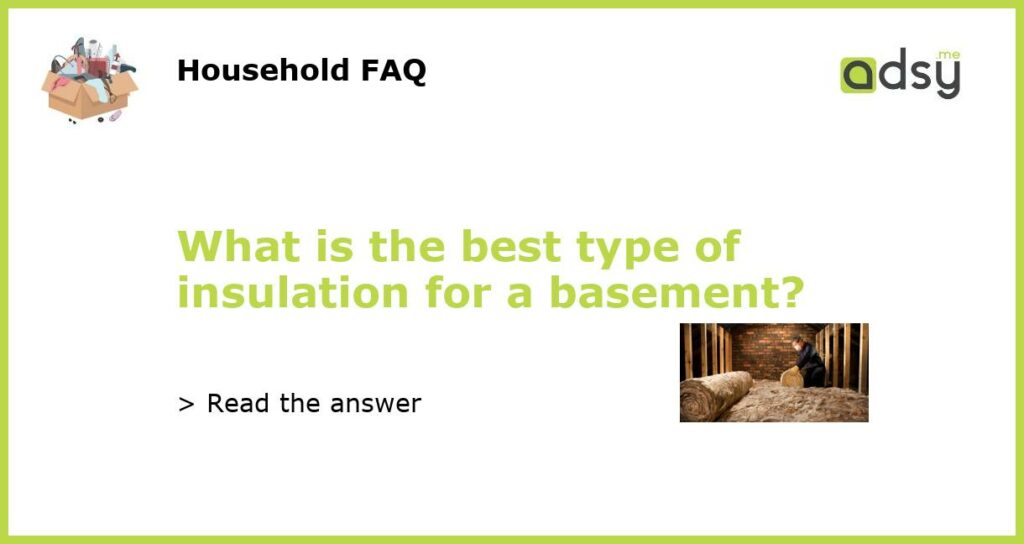The Importance of Insulating Your Basement
Insulating your basement is crucial for maintaining the overall energy efficiency and comfort of your home. A properly insulated basement can help regulate the temperature, prevent moisture and mold growth, and reduce energy costs. When it comes to choosing the best insulation for your basement, there are a few factors to consider.
Fiberglass Insulation
Fiberglass insulation is a popular choice for insulating basements due to its affordability and effectiveness. It is made of fine glass fibers and comes in batts or rolls that can be easily installed between the studs, joists, and beams of your basement walls. Fiberglass insulation is non-combustible, resistant to moisture, and has a high R-value, which measures its ability to resist heat flow. However, it is important to note that fiberglass insulation can cause skin and respiratory irritation if proper precautions are not taken during installation.
Spray Foam Insulation
Spray foam insulation is another excellent option for insulating basements. It is a polyurethane material that expands upon application, creating an airtight seal. Spray foam insulation can be applied directly to the walls, floors, and ceilings of your basement, filling in any gaps and cracks. It provides a superior R-value and acts as a moisture barrier, preventing the growth of mold and mildew. Additionally, spray foam insulation has excellent soundproofing properties, reducing noise transmission between floors. However, it is more expensive than fiberglass insulation and may require professional installation.
Rigid Foam Insulation
Rigid foam insulation, also known as foam board insulation, is a lightweight and durable option for insulating basements. It is made of polystyrene or polyisocyanurate and comes in rigid panels that can be easily cut to fit the desired area. Rigid foam insulation provides a high R-value and is resistant to moisture, making it an ideal choice for basement walls and floors. It can be installed directly onto the walls or used as a continuous insulation system. However, it is important to properly seal the joints and edges to prevent air leakage.
Cellulose Insulation
Cellulose insulation is an eco-friendly option for insulating basements. It is made from recycled materials such as newspaper and treated with fire retardants to increase its resistance to fire. Cellulose insulation can be blown into the walls, floors, and ceilings of your basement, filling in any gaps and crevices. It provides a good R-value and acts as a sound barrier, reducing noise transfer. However, it is important to properly address any moisture issues in your basement before installing cellulose insulation, as it can absorb moisture and promote mold growth.
When it comes to choosing the best insulation for your basement, consider factors such as affordability, effectiveness, moisture resistance, and ease of installation. Fiberglass insulation is a popular and cost-effective option, while spray foam insulation provides superior performance and airtightness. Rigid foam insulation offers excellent thermal resistance and durability, while cellulose insulation is an eco-friendly choice. Ultimately, the best insulation for your basement will depend on your specific needs and budget.

